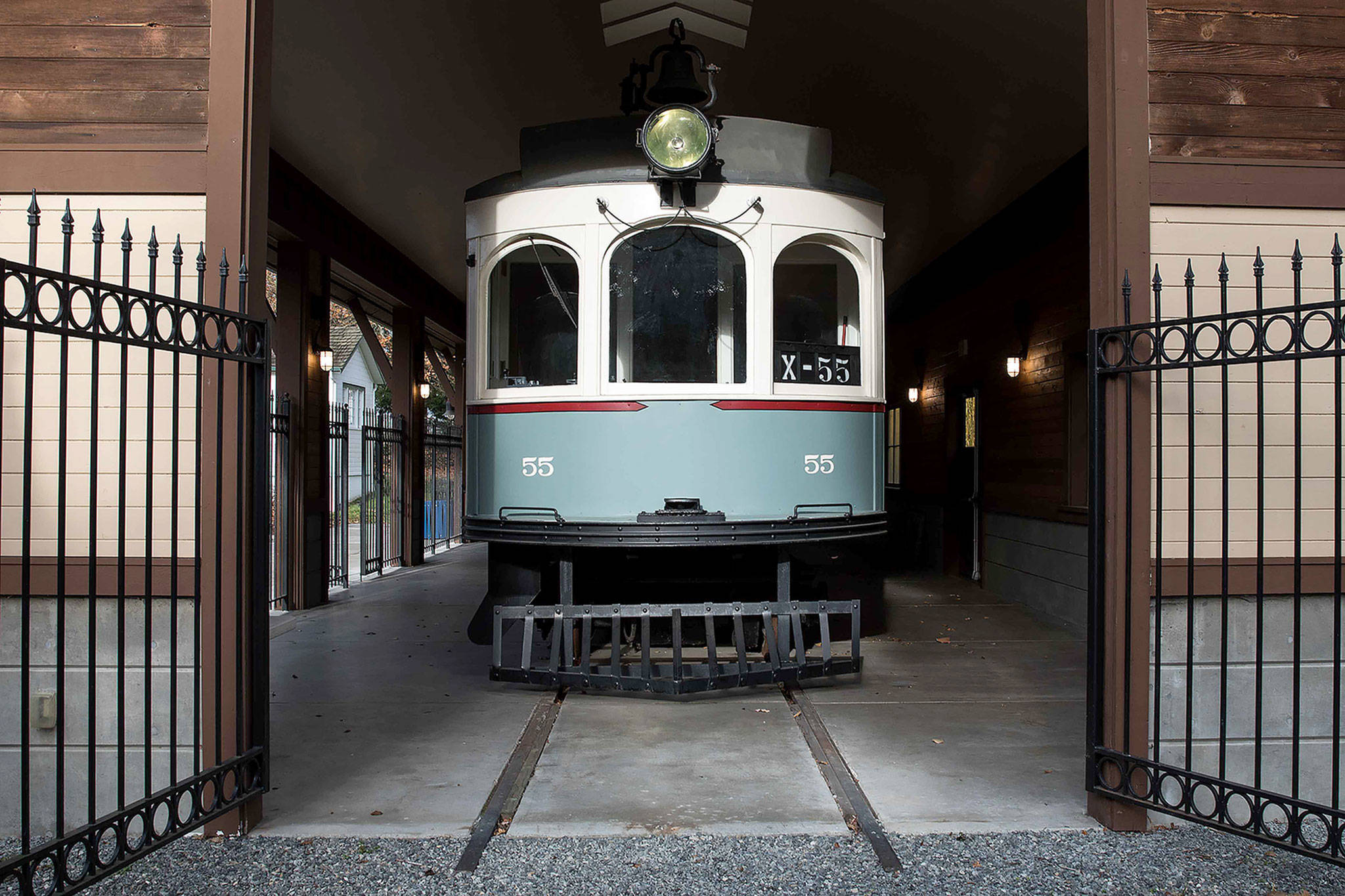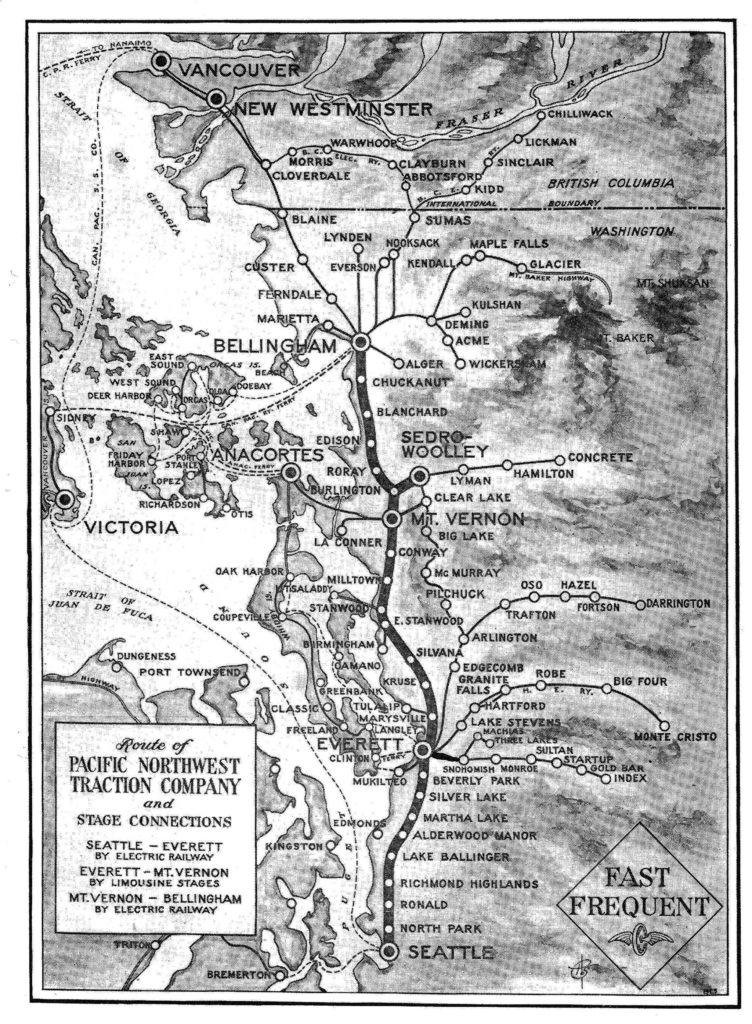LYNNWOOD — When Sound Transit’s Lynnwood Link Extension opens in 2024, it won’t be the first rapid transit line to connect Snohomish County and Seattle.
More than 110 years ago, the first electric trains began running along the Interurban Railway linking Everett and Seattle. From 1910 to 1939, the trolleys followed what would become Highway 99 until about Lynnwood, where they then shifted east to where I-5 lies today. In Everett, the route meandered away from the highway as it swung through different neighborhoods.
Prior to the Interurban, travelers moving between Everett and Seattle had two choices; a steamship traversing the Puget Sound or a train along the Great Northern Railway. In 1900, as the region experienced a population boom similar to that seen today, Fred Sander saw an opportunity to link the two urban areas and access the cheap land in between, according to the 1988 book “To Seattle by Trolley,” by Warren Wing.
Construction on the line began in 1901 in Ballard. Six years later, track was put down to Halls Lake in south Lynnwood, according to Wing. In the summer of 1909, the operator proposed continuing the line to Everett and meeting the goal of completing the route the following year.
On May 2, 1910 service began. Trains ran about every hour from early in the morning to late into the night. The roughly 90-minute, 29-mile ride cost riders $1.30, according to an article in The Everett Daily Herald at the time.
That’s about $34 in today’s dollars.
A crew of two, a conductor and a motorman, worked each trolley. The ornate cars had inlaid mahogany interiors, colored glass windows and leather seats. For the trolley, much like today, the greatest delays came when mixing with Seattle traffic, according to Wing.
Soon after the Seattle to Everett route was completed, construction on a northern route between Mount Vernon and Bellingham began. A bus ran between the two lines.
The rise of automobile ownership and the highway system eventually spelled doom for the Interurban.
On Feb. 20 1939, the last day the trains were scheduled to run, a reporter from The Herald poetically noted: “A ‘Swan Song’ will hum along the iron trail between Everett and Seattle this Monday evening, as the Interurban rattles and romps, bounces and bangs over the line on its final trip.”
Signs of the long abandoned line still exist. A dispatcher’s window hangs on the northern side of the former Everett depot at the corner of Pacific and Colby avenues. A statue, “Waiting for the Interurban,” stands in the Seattle neighborhood of Fremont. Bikers and pedestrians travel the old route every day as they pedal and walk along the Interurban Trail.
The last intact trolley car, No. 55, can be seen at the Lynnwood-Alderwood Manor Heritage Association.
When the city of Lynnwood purchased the trolley in 1993 it had been sitting nose down in a ravine of mud and muck near Snoqualmie where it had been used as a ticket booth, according to Jeanne and Gary Rogers, docents at the museum. Before that it was a hamburger joint at the corner of 75th Street SE and Evergreen Way.
Rail history runs deep in Jeanne Rogers’ family. Her father, Walter Shannon, was one of the last motormen to work the Interurban Line. After the line ceased operating, Shannon drove the buses that replaced the trolley cars. Later, he helped the city restore car No. 55.
Jeanne Rogers’ maternal grandfather was a conductor on the line. And she herself worked on the Burlington Northern Santa Fe Railway.
“What really put this line out of service is when the state of Washington opened Highway 99,” she said. “That was the death knell for the Interurban.”
Today cars clogging up I-5 has brought back the need for a rapid transit line, which will follow a similar route to its predecessor.
About light rail reaching Snohomish County, Jeanne Rogers said, “It’s about time.”
Got a question? Email me at streetsmarts@heraldnet.com or call 425-374-4165. Please include your name and city of residence.
Talk to us
> Give us your news tips.
> Send us a letter to the editor.
> More Herald contact information.




























